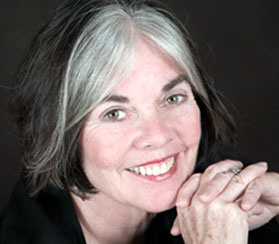Articles: Paging Joseph Campbell
Turns out that the fabled Hero’s Journey is a bunch of hooey when you’re writing about Heroines.
By Jill Soloway
Published in Los Angeles Magazine, October, 2011
When I came to Hollywood to be a writer, I learned the Hero’s Journey structure right away. First laid out in a famous 1985 memo by a development executive at Disney named Christopher Vogler, it has since become the go-to guide for how to write a commercial studio movie, and I dutifully embraced its form (three acts) and its inspiration (the mythologist Joseph Campbell). Back then every so often my mom would ask me to talk to her friends’ kids who’d moved to L.A. from Skokie, Illinois, determined to break into screenwriting. I’d sit across from them in a café and proudly share my command of the formula.
“So, it’s like a slingshot,” I’d say, describing the call to adventure in the first act. “You pull back on the tension – strrrretch – until BOIING! You’re catapulted over a threshold into the ever–heightening arc of the second act. Your hero leaps over obstacles, rescues a princess, vanquishes enemies – test, test, test. Everything explodes into a climax, and you can pack your pens and go home.”
For years this structure was a comfort in that it provided a road map. But a few years back I began to wonder whether the Hero’s Journey worked for a chick protagonist. When I asked my writer friends – both fellows and ladies – many insisted that it did. You simply place the heroine on the journey and call it a day.
I wanted to believe them – it would have been easier, frankly. But a few script deals and unsold pilots later, I kept tripping over why I couldn’t: If the Hero’s Journey was an arc, it increasingly became apparent to me that the Heroine’s Journey was a circle.
I went to my bookshelf and cracked some spines. OK, I’m lying. I Googled. Quickly I discovered that in the ’80s, right around when Vogler was writing that famous memo, Maureen Murdock, a student of Joseph Campbell, asked him about the Heroine’s Journey. Campbell’s reply: She doesn’t have one. “Women don’t need to make the journey,” he told Murdock. “All she has to do is realize that she’s the place people are trying to get to.”
Oh Joseph.
Murdock – a Santa Barbara psychotherapist who did postgraduate work in L.A. – responded by writing a book, The Heroine’s Journey: Woman’s Quest for Wholeness. In it she describes the cyclical nature of the female experience. Turns out circles of all kinds can be found in many of the best stories by and about us ladies. Some people call this structure “pattern storytelling” – a repeated return to the same place. My theory evolved. Women’s stories weren’t circles as much as coiled springs. Like Slinkies, female-centered plotlines seemed powered by their own momentum. As an exercise, I broke down Juno, written by my friend, Diablo Cody. In the film the pregnant teen played by Ellen Page cycles from dyad to dyad: She’s a daughter but also an expectant mother, a child but potentially an “other woman.” Suddenly I started to spot scores of femme story lines that were similarly spring-like (even if they were written by buys: In Silence of the Lambs, heroine Clarice Starling goes round and round, from vulnerable to tough and back again as she transforms from victim to victor. The surprise ending of Thelma & Louise implies that the trials the protagonists go through – marked by repeated returns to highway humiliations – add up to not just loving each other but literally becoming one in a swan drive off a cliff.
All of this reminded me of my therapist, the great Ellen Silverstein. It actually says that on her door: THE GREAT ELLEN SILVERSTEIN. (I’m lying again – but it should!) She has treated so many people in my social circle (there’s that word again) that chances are, if you’re reading this, Ellen Silverstein is your therapist.
Ellen told me that sometimes it looks as if you’re traveling in circles because you’ve come back to the same place. But then you realize you’re spiraling up a mountain. Higher up, better view. That’s the journey I try to write about now. It can make a girl dizzy. But at least it’s true.



